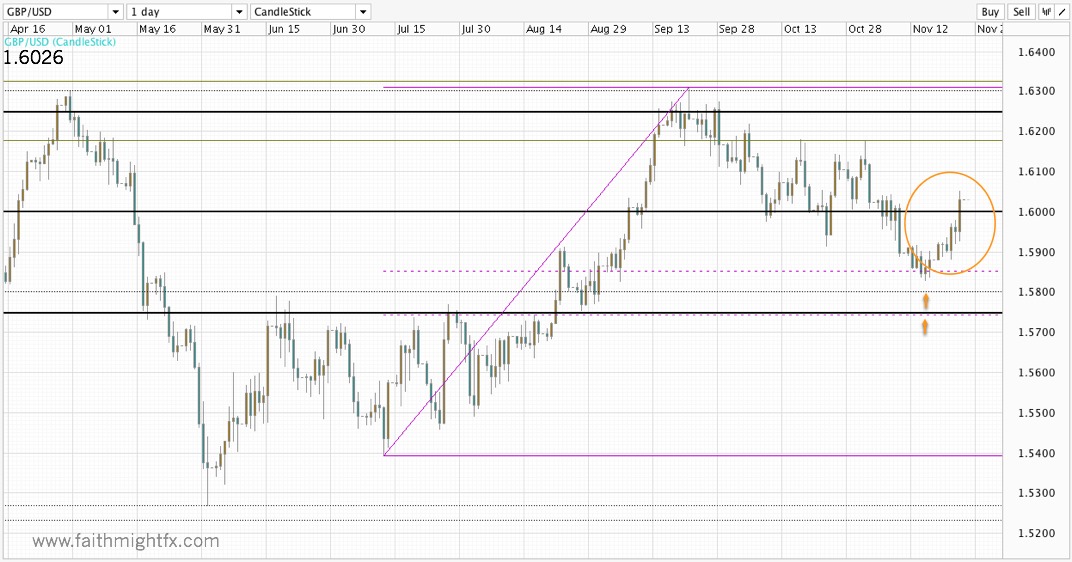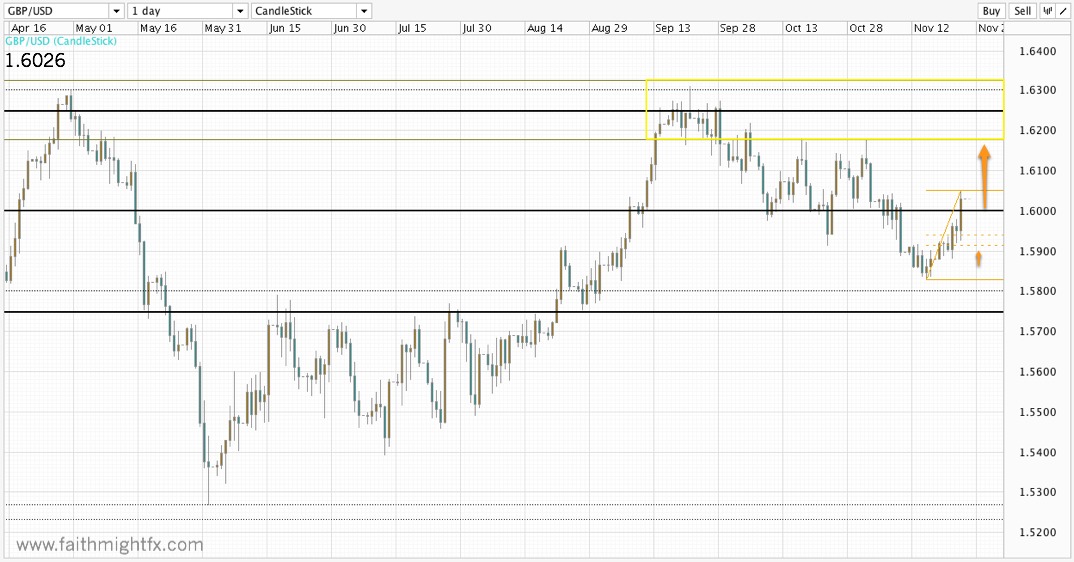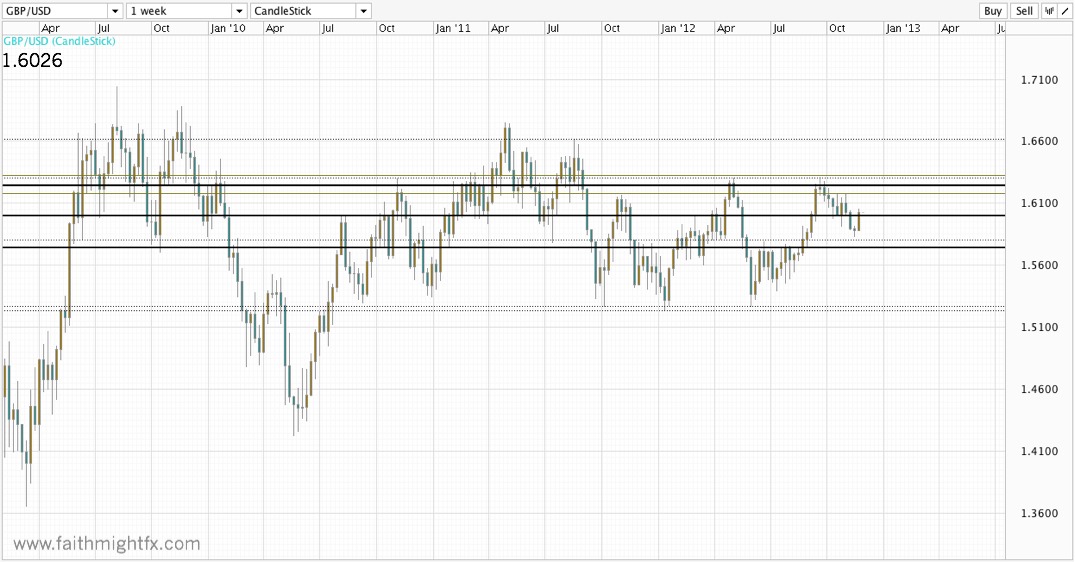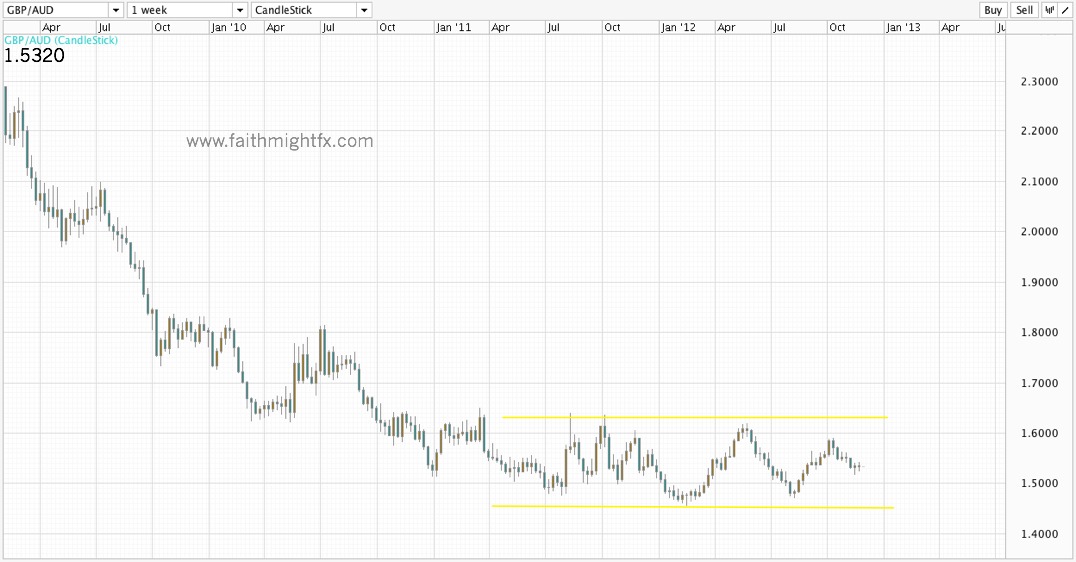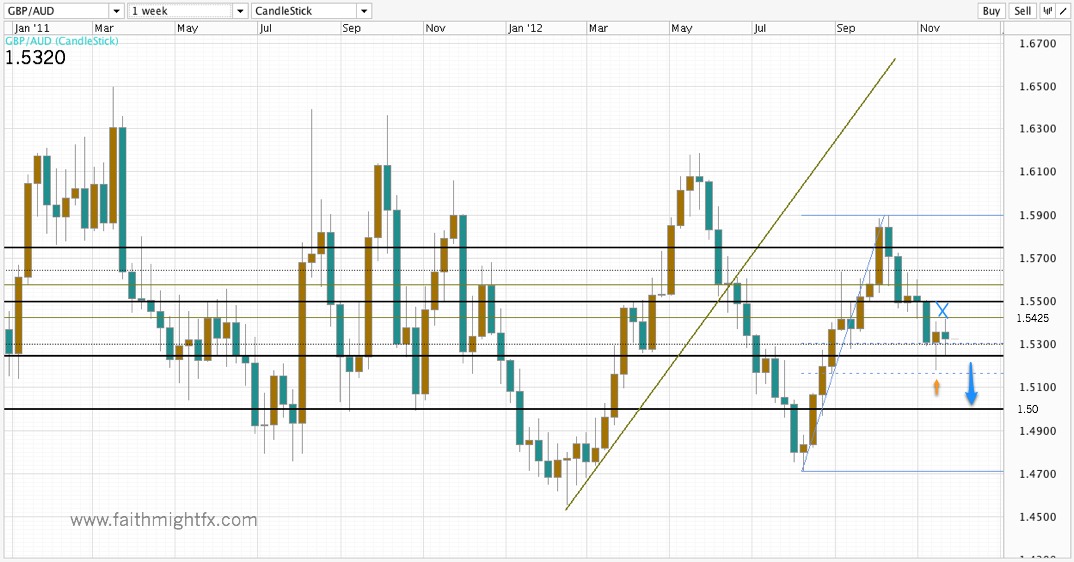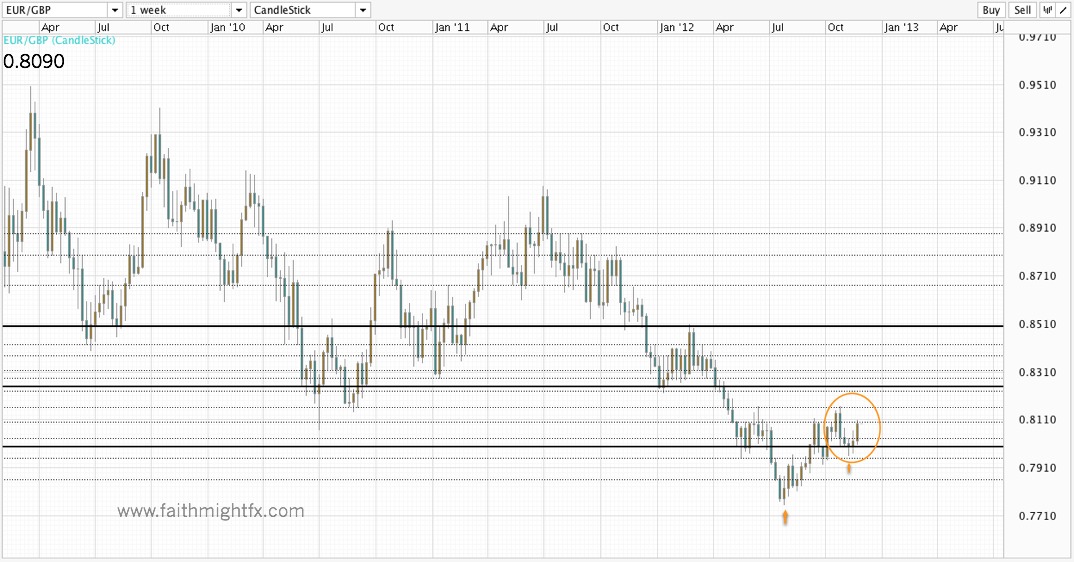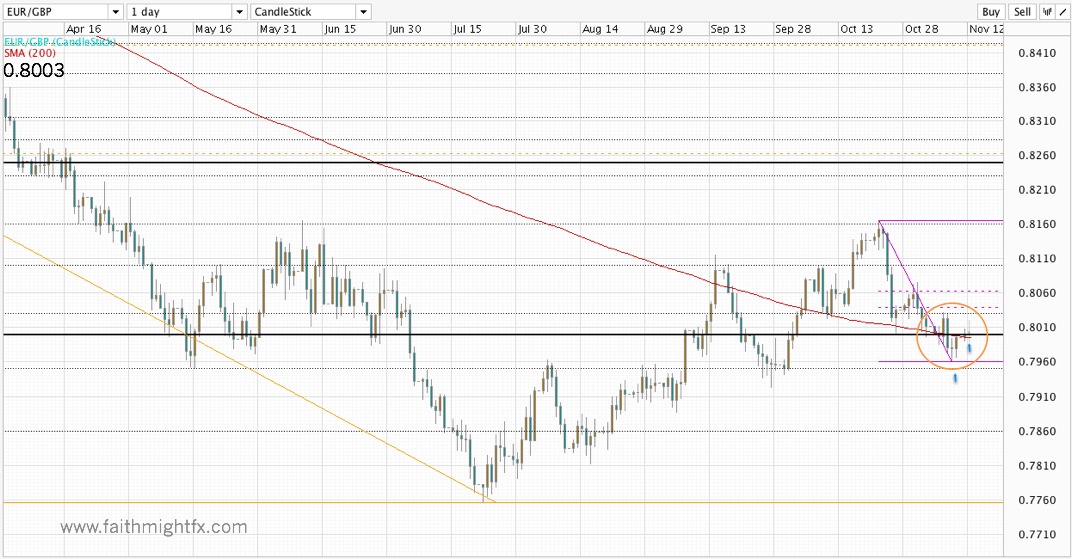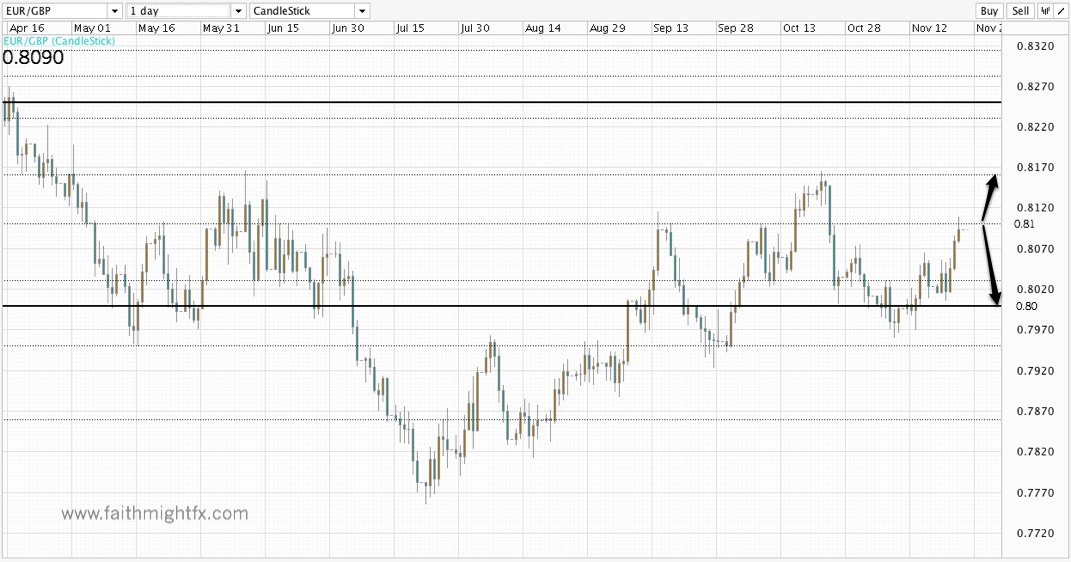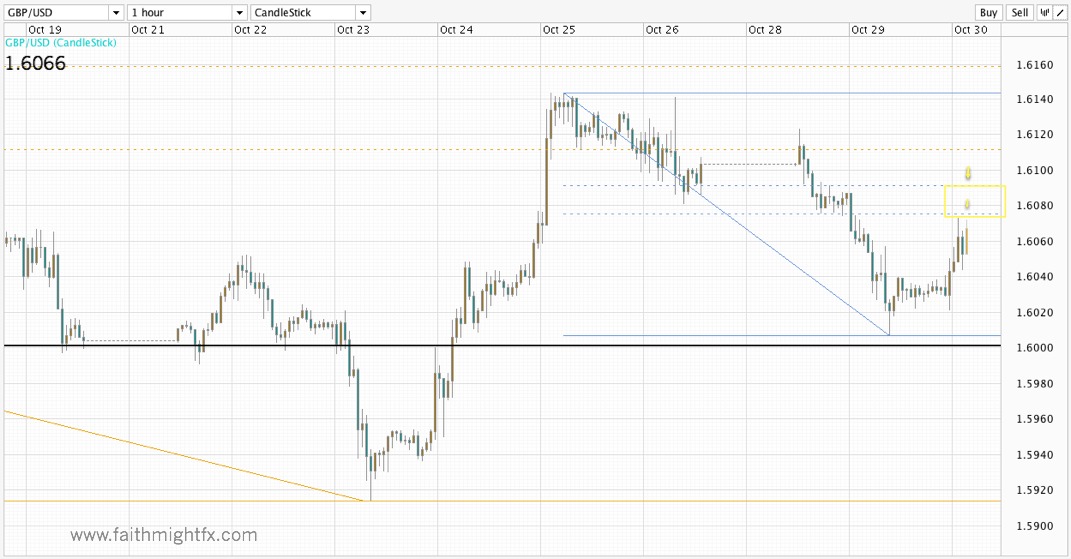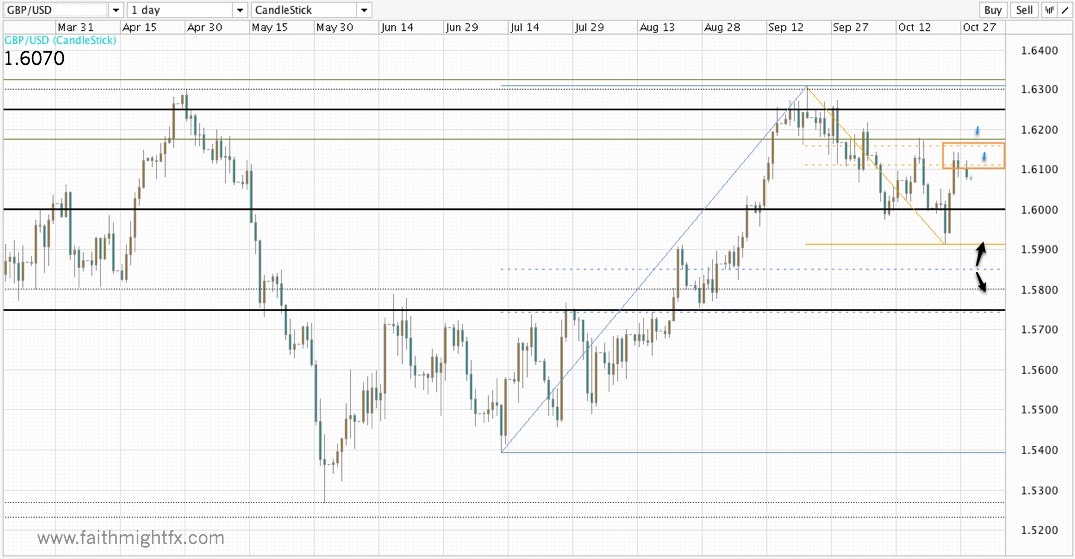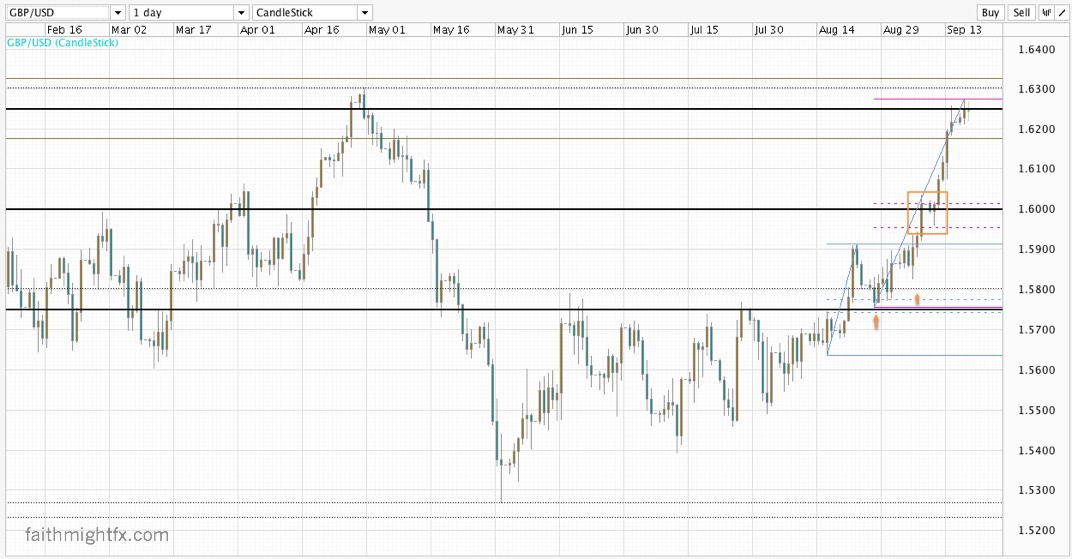In the forex markets, premarket is really only early Sunday morning. With charts frozen until the afternoon open, this can be the best time to find insights before charts start ticking again.
Because the $GBPNZD has not spent much time at these levels, it is taking some years for this currency pair to truly trend again.
Zoom in on the weekly chart and we can see that this pair has been trading rangebound between 1.98 and 1.9270. Last week’s price action tested the intermediate highs at 1.9625 and closed the week in the middle of the channel below the key psychological level at 1.95. The new week open should continue momentum towards the bottom of the channel at 1.9270. That is a key level to the downside for $GBPNZD short term as it continues to consolidate the larger bear trend.


